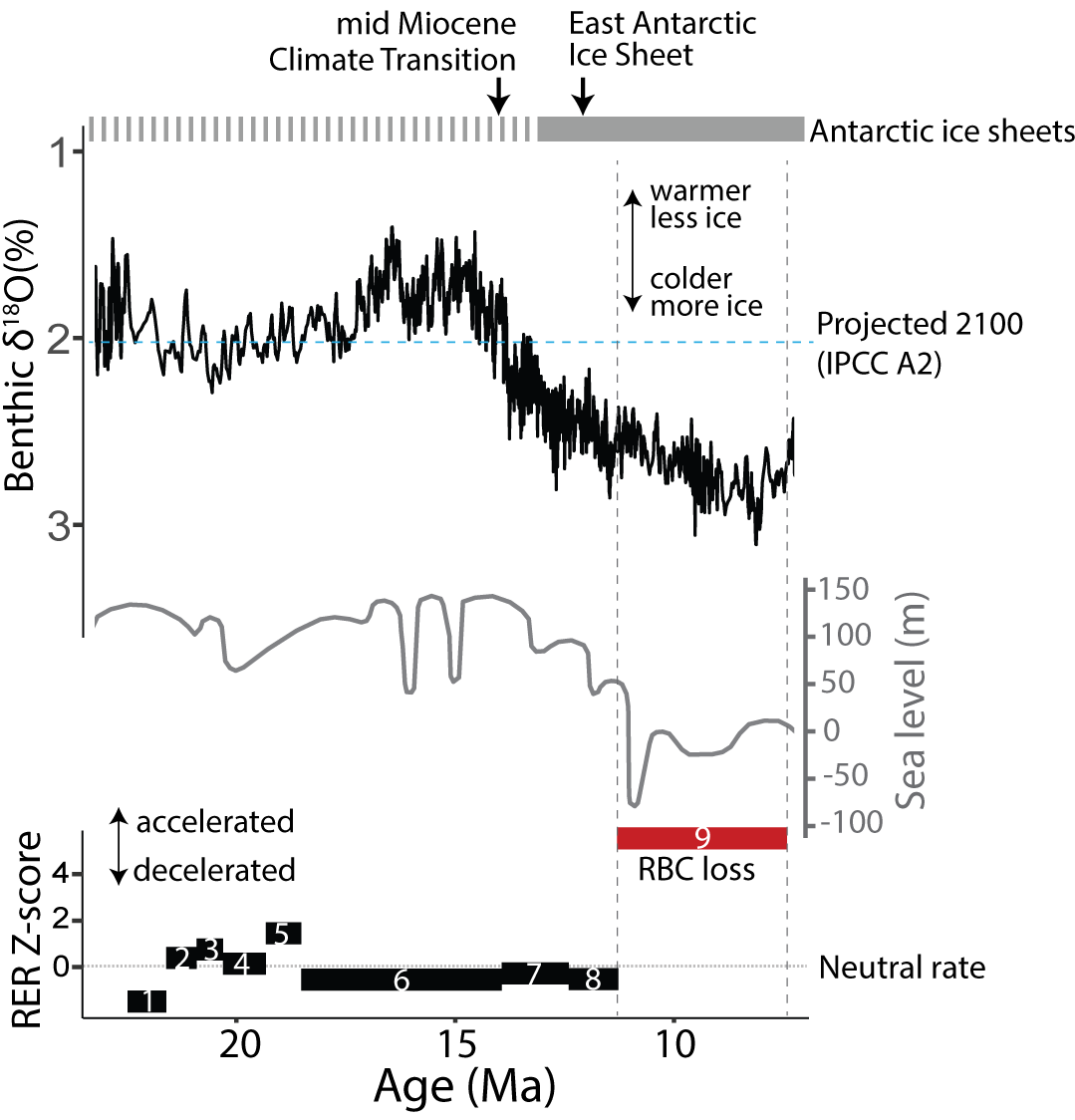Abstract
In the frigid, oxygen-rich Southern Ocean (SO), Antarctic icefishes (Channichthyidae; Notothenioidei) evolved the ability to survive without producing erythrocytes and hemoglobin, the oxygen-transport system of virtually all vertebrates. Here, we integrate paleoclimate records with an extensive phylogenomic dataset of notothenioid fishes to understand the evolution of trait loss associated with climate change. In contrast to buoyancy adaptations in this clade, we find relaxed selection on the genetic regions controlling erythropoiesis evolved only after sustained cooling in the SO. This pattern is seen not only within icefishes but also occurred independently in other high-latitude notothenioids. We show that one species of the red-blooded dragonfish clade evolved a spherocytic anemia that phenocopies human patients with this disease via orthologous mutations. The genomic imprint of SO climate change is biased toward erythrocyte-associated conserved noncoding elements (CNEs) rather than to coding regions, which are largely preserved through pleiotropy. The drift in CNEs is specifically enriched near genes that are preferentially expressed late in erythropoiesis. Furthermore, we find that the hematopoietic marrow of icefish species retained proerythroblasts, which indicates that early erythroid development remains intact. Our results provide a framework for understanding the interactions between development and the genome in shaping the response of species to climate change.
